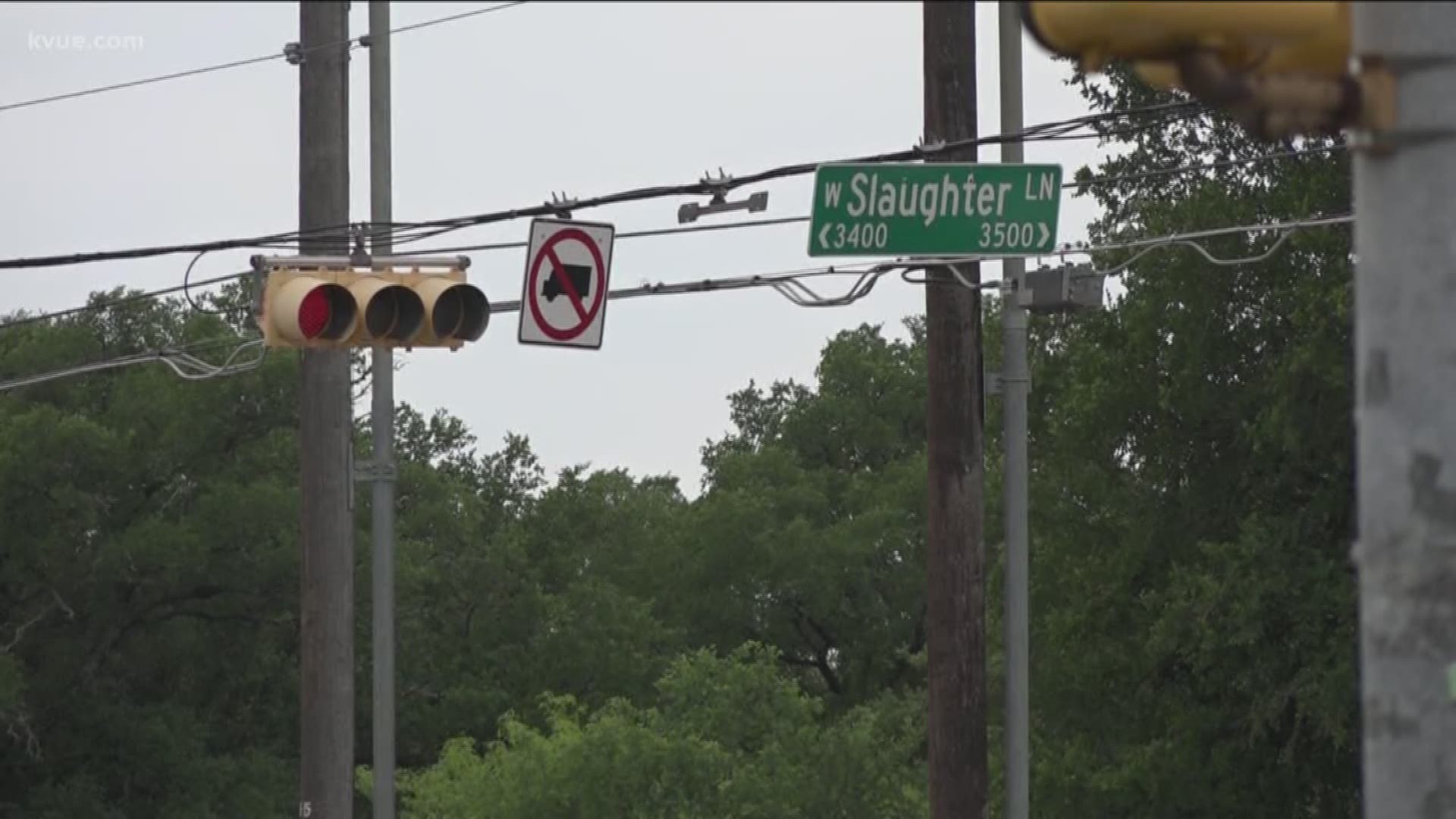AUSTIN, Texas — With more cars on Austin's roads, the city is working to reduce traffic deaths and improve traffic flow.
William Cannon and Slaughter Lane in South Austin are two of the top priorities and both are getting some major changes.
The City of Austin said it is working to improve safety and mobility along Slaughter Lane between FM 1826 and Bluff Springs Road (approximately 10 miles) and William Cannon Drive between Southwest Parkway and McKinney Falls Parkway (approximately 12 miles).
The majority of the road projects -- more than $120 million -- are being funded by 2016 Mobility Bond money, through the Corridor Program.
William Cannon and Slaughter have traffic signals with outdated technology and lack bike lanes in some portions. Pedestrian crossings are spread far apart and some sidewalks do not meet ADA standards.
Changes to William Cannon include:
- Up to five new traffic signals
- Up to seven signalized pedestrian crossings
- Turn lane modifications to Brodie Lane, S Pleasant Valley Road, Bluff Springs Road, Running Water Drive and McKinney Falls Parkway
- Up to 18 miles of new or rehabilitated ADA-compliant sidewalks
- Up to five miles of protected bike lanes
- Transit stop improvements at various locations
- Between Running Water Drive and McKinney Falls Parkway:
- Roadway widening from two lanes to four lanes, new bridge over Marble Creek, shared-use path on both sides of the road and landscaping enhancements that include trees (funded by CAMPO grant of up to $11.75 million).
From 2013-2017, there were five fatalities and 55 crashes involving pedestrians on William Cannon.
Changes to Slaughter Lane include:
- Up to 25 traffic signal improvements
- Up to four pedestrian hybrid beacons
- Intersection improvements with turn lane modifications to Escarpment Boulevard, Brodie Lane, S Congress Avenue and I-35 Southbound Frontage Road
- Up to six miles of new or rehabilitated ADA-compliant sidewalks
- Up to 14 miles of protected bike lanes
- Adding a protected bike lane from I-35 to Brandt Road by re-purposing the existing outside lanes
- Transit stop improvements (various locations)
- Between Mopac Expressway and Brodie Lane: roadway widening from four lanes to six lanes, landscaping enhancements.
On Slaughter Lane from 2013-2017, there were five fatalities and 20 crashes involving pedestrians.
“Our goal is to make improvements that support all the modes,” said Corridor Program office director Mike Trimble. “We want to support better mobility, better safety for vehicles, but we also want to support better connectivity and mobility for bike users, for pedestrians."
The city is having an open house for the community on Saturday May 4 about the plans.
That will run from 11 a.m. to 1 p.m. at the Palm Elementary School.
PEOPLE ARE ALSO READING:

